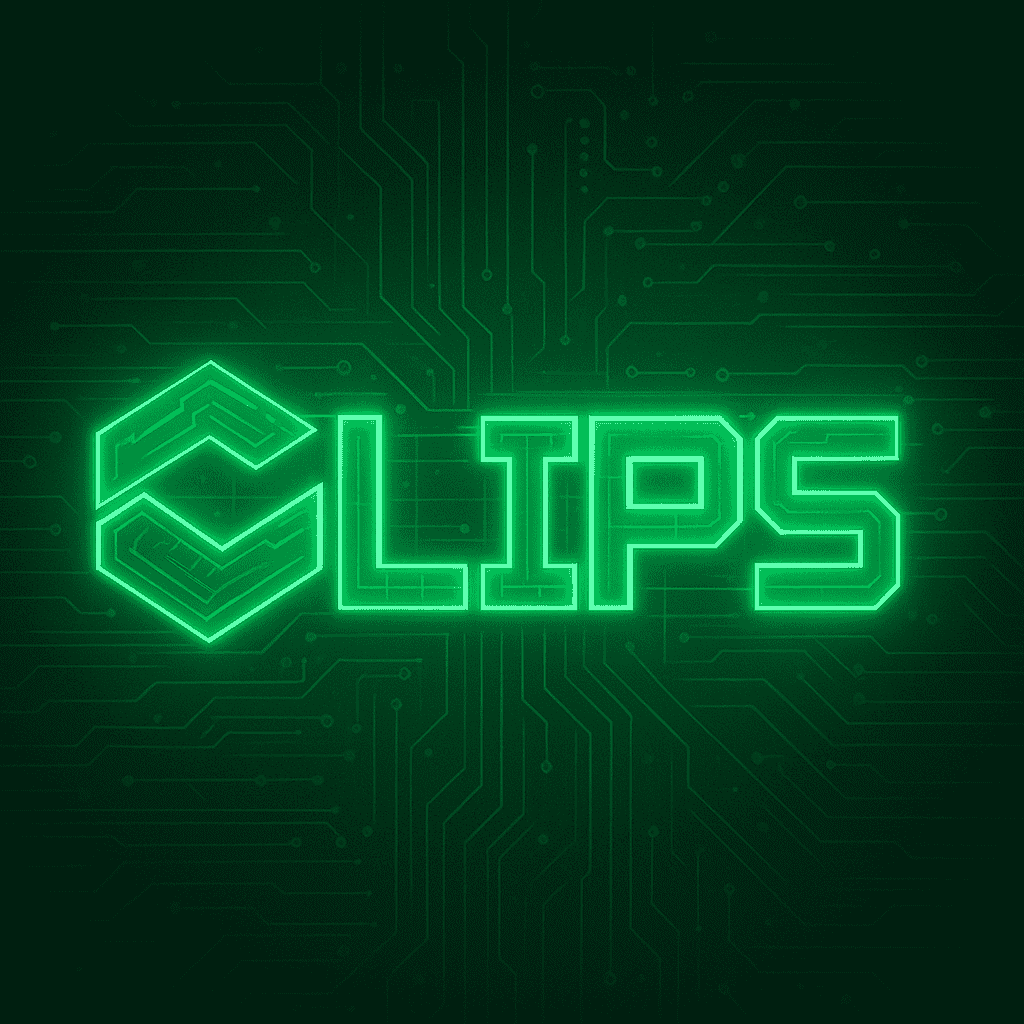How to Convert Long Videos into Short Clips Using AI
How to Convert Long Videos into Short Clips Using AI? AI-powered tools can automatically detect the most exciting moments and generate ready-to-share videos in minutes.
Usually, multiple strategies can be used to convert a long video into a short one. The first approach, and the one used in CLIPS, our long-to-short video editor, is Hybrid Audio/Event-Driven Selection. This method is particularly suited for podcasts and videos that are more audio-focused than visual, as it highlights the most engaging moments based on audio cues.
VATT: Video-Audio-Text Transformer
One of the most powerful AI approaches for automatically generating short videos from long-form content is multimodal transformers, which jointly model video, audio, and text. A prime example of this is VideoBERT, which adapts the BERT architecture to learn a joint visual-linguistic representation for video sequences.
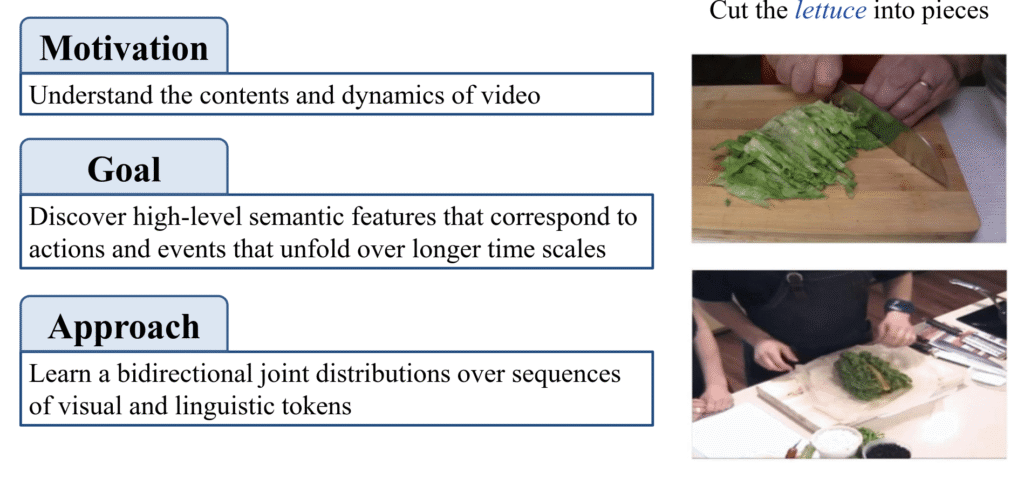
The key idea behind VideoBERT, and similar architecture, is to capture high-level semantic features that correspond to actions and events unfolding over longer time scales. This is done by converting video frames into discrete visual tokens using vector quantization of spatio-temporal features, and transcribing spoken audio into text using automatic speech recognition (ASR). Both modalities are then fed into a BERT-style bidirectional transformer, allowing the model to learn the joint distribution over sequences of visual and linguistic tokens.
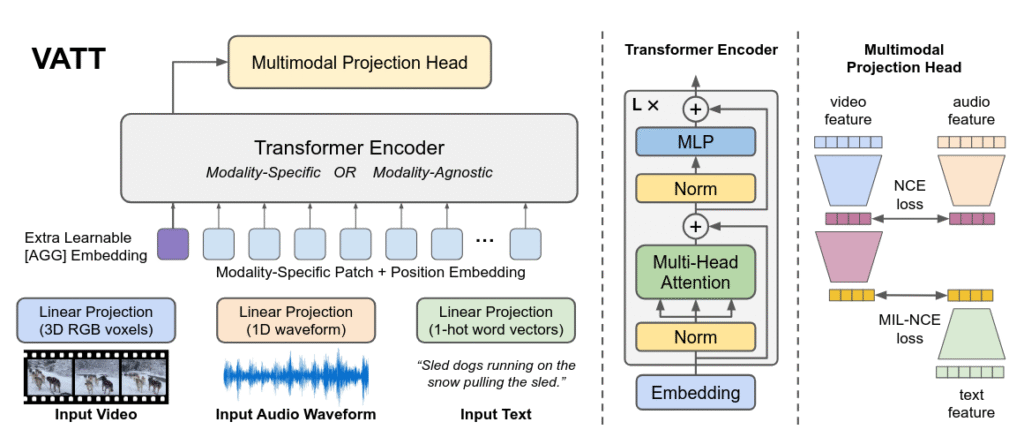
Several new models have been developed based on this architecture, while keeping the core structure intact. These models can effectively classify videos and automatically identify the best segments to create short clips.
Contrastive / CLIP-style retrieval (zero-shot moment scoring)
Contrastive or CLIP-style retrieval is a powerful AI approach for automatically identifying the most interesting moments in a video without requiring task-specific training data. The key idea is to embed both visual frames or short video clips and text prompts into a shared semantic space. Once embedded, candidate video segments can be ranked by similarity to target prompts, such as “best tip,” “funny reaction,” or “product demo.” This enables zero-shot scoring, meaning the model can find relevant clips even if it hasn’t seen labeled examples of the task before.
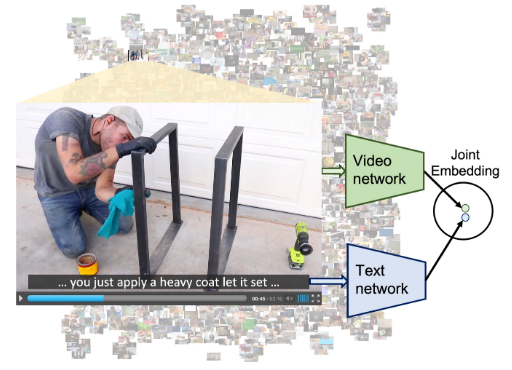
Once the segments are embedded, each clip can be compared to the text prompts using a similarity metric, typically cosine similarity. Segments with the highest similarity scores are selected as the most relevant moments. These scores can be combined with additional features, such as audio peaks, transcript relevance, or motion intensity, to refine the selection. The top-scoring clips are then assembled into short videos, enabling automated, zero-shot generation of engaging content without manual intervention.
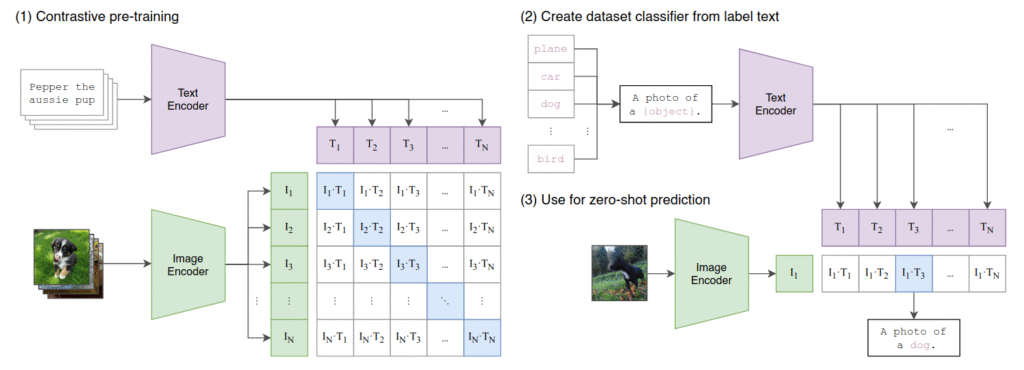
Supervised engagement / highlight models (learn from historical signals)
Supervised highlight detection methods leverage historical user engagement to identify the most compelling segments of videos. These approaches typically train classifiers or regressors to predict a “highlight score” using labeled data, such as past clips that achieved high viewership or watch-time. By incorporating multimodal features, including video frames, transcripts, and visual embeddings, these models directly optimize for content that has historically performed well, making them particularly effective when sufficient engagement metrics are available, for example HighlightMe.

Frames with higher scores are considered more “highlight-worthy,” and consecutive high-scoring frames are grouped into segments to form coherent clips. Each segment can be ranked based on the average score of its frames, and slight trimming or smoothing can be applied to make the clips visually natural. The final output is a set of video clips that automatically showcase the most significant or engaging moments in the original video, focusing specifically on human actions and interactions, without requiring manual editing.
Hybrid Audio / event-driven selection
Audio-driven selection is a highly effective AI approach for automatically generating short clips from long-form audio or video content. The key idea is to identify moments in the audio track that are naturally engaging, such as laughter, applause, or musical beats, and use these events to center the clip. This approach works particularly well for podcasts, music videos, comedy shows, and talks, where audio cues often signal the most interesting or entertaining moments.
Models for audio-driven selection typically rely on classifiers trained on large-scale datasets like AudioSet, which contains labeled examples of thousands of audio events. Beat detectors, laugh detectors, and applause detectors scan the audio waveform for peaks in these categories. This approach can be further enhanced by combining it with audio transcription using models like Whisper, which converts speech to text. The resulting text segments can then be analyzed alongside the detected audio events, enabling more precise clip selection based on both auditory peaks and semantic content.
This hybrid method is fast, reliable, and particularly suited for audio-first formats because it leverages inherent engagement signals from the audio while also incorporating meaningful textual cues. By combining audio event signals, transcription analysis, and temporal context, clips can be automatically generated that align with the most attention-grabbing portions of the content.
Reinforcement learning / sequential selection (optimize for downstream KPIs)
Reinforcement learning (RL) provides a powerful approach for automatically generating short clips by treating clip selection as a sequential decision-making problem. Instead of selecting moments independently, an RL agent considers the temporal context of previous selections and aims to maximize a long-term reward, such as engagement metrics like views, watch-time, or click-through rates. This makes RL particularly suited for optimizing for downstream key performance indicators (KPIs) rather than just immediate audio or visual saliency.
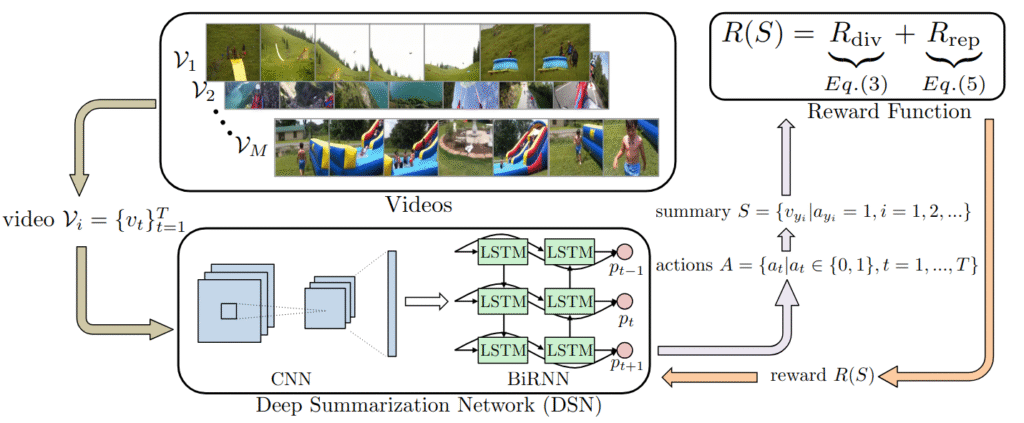
In practice, the model interacts with the video or audio content sequentially, proposing clip boundaries or highlighting segments. A reward signal, either simulated based on historical data or obtained from real user feedback, is used to reinforce selections that lead to higher engagement. Over time, the agent learns a policy that balances factors such as content diversity, pacing, and attention-grabbing moments to maximize overall performance.
Key references for this approach include Deep Reinforcement Learning for Unsupervised Video Summarization (DSN) and related RL-based video summarization works, which demonstrate how RL can effectively learn to select highlights without requiring explicit human annotations for every segment. While RL offers significant flexibility and potential performance gains, it is generally harder to train, requiring careful reward design, exploration strategies, and often a simulated or partially observed environment to stabilize learning.
Cost per Clip
The cost of generating a short clip using AI depends on several factors, including the model used, the length of the source video, and whether you run the process locally or on cloud infrastructure. Lightweight audio-driven selection methods and simple CLIP-style retrieval can be very fast and inexpensive, often just a few cents per clip if run in batch on consumer-grade GPUs or cloud instances.
More complex multimodal transformers like VideoBERT or VATT require significantly more compute, as they process both video frames and audio/text embeddings. Running these models in the cloud can cost anywhere from a few dollars to tens of dollars per clip, depending on resolution, video length, and batching efficiency.
Reinforcement learning–based sequential selection is generally the most resource-intensive approach because it involves simulating reward feedback over multiple potential clip sequences. Training an RL model has a high upfront cost, but once trained, generating new clips is relatively cheaper. Overall, careful selection of models and optimization of pipeline components can reduce costs while maintaining high-quality clips.
Conclusion
In conclusion, automatically generating short clips from long-form video content can leverage a wide spectrum of AI models across different modalities.
For audio-only approaches, tools like Whisper for speech-to-text and AudioSet classifiers are commonly used, while embeddings from models like VGGish, YAMNet, or OpenL3 can capture music, sound events, and emotional cues.
Vision-only models remain relevant for classic video summarization tasks. Models like VSUMM, DR-DSN, or Unsupervised Keyframe Extraction Networks can generate highlight clips without requiring complex multimodal input.
Beyond VideoBERT and VATT, multimodal transformers such as HERO, UniVL, and MMT enable joint modeling of video, audio, and text, making them highly effective for highlight detection, summarization, and retrieval tasks.
Self-supervised or contrastive video representation models like VideoCLIP, X-CLIP, and ActionCLIP extend the CLIP-style retrieval approach to video, embedding short segments for semantic similarity scoring and zero-shot clip selection.
Reinforcement learning and sequential selection models provide another powerful avenue by treating clip generation as a decision-making problem. DSN, SUM-GAN-RL, and DRL-SV explicitly optimize sequential selection using reward signals, aiming to maximize engagement metrics like views, watch-time, or click-through rates.
Finally, generative video models, including diffusion-based or video-to-video synthesis approaches, offer emerging capabilities to automatically transform or condense content, opening new possibilities for creating visually coherent short clips beyond simple extraction.
Together, these models form a rich ecosystem of AI tools for automating long-to-short video conversion, enabling more efficient production of engaging content across platforms.
